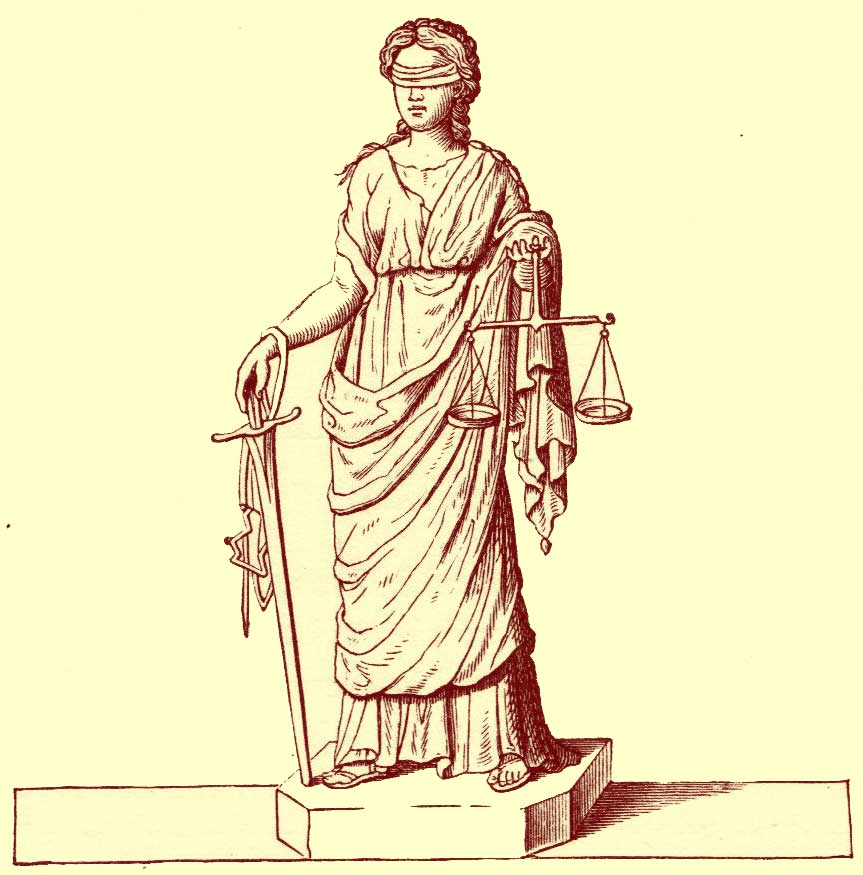
From Manual of Mythology, by Alexander S. Murray; Revised Edition, Philadelphia: David McKay, Publisher, 1895; pp. 157-159.
157
Fig. 38. — Themis.
A daughter of us and us, Themis personified that divine law of right which ought to control all human affairs, of that highest and noblest sense of right which is subject to no human influences. In this capacity she came to be viewed also as goddess of the rites of hospitality. She was a personification of divine will as it bore upon the affairs of the world, and accordingly the Delphic oracle had been under her control before it was yielded to Apollo, to whom, as her successor, se communicated the prophetic art. A long time passed before Zeus [Jupiter, Jove] could persuade her to become his wife — his first wife, as some myths have it; his second, according to others, which say that Metis was his first. To him she bore the Horæ, Mœræ, or Parcæ, and Astræa [Dike], the goddess of justice, of whom we have already told how she forsook the earth during the Bronze Age. The proper home of Themis was Olympus, and hence she was styled Urania. But during the war with the Titans she descended to earth, and there, 158
In consequence of the profound wisdom and open truthfulness which formed the essential features of the character of Themis, even the supreme gods consulted and acted on her advice, as, for example, did Zeus, when he declined to marry Thetis, because of the prediction of Themis that a son would be the issue of the marriage, who would excel even his father in might. We shall afterwards have to relate how Thetis was given in marriage to Peleus, a mortal, in order that her son might not be a source of danger to the gods. The worship of Themis extended to many districts of Greece, where temples, altars, and statues were raised in her honor. 159
Ancient artists represented her as a woman of mature age, with large open eyes; while modern artists — and they alone, — it must be observed — present her as in Fig. 38.
She is further represented holding a sword and chain in one hand and a balance in the other, to indicate eh severity and the accuracy with which justice is to be meted out and administered.